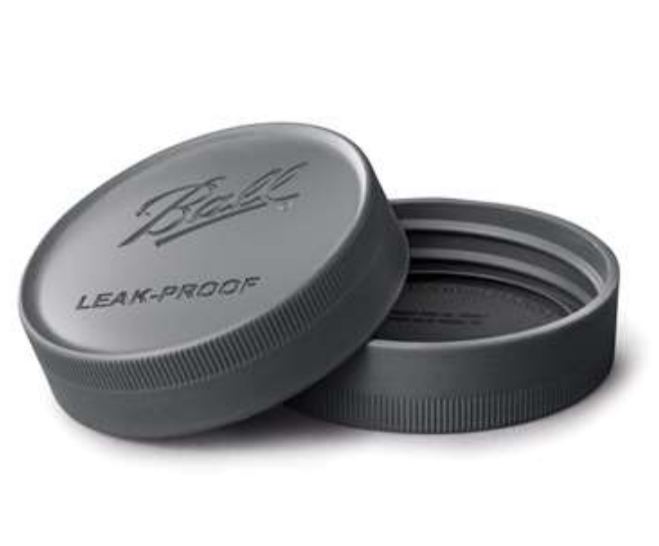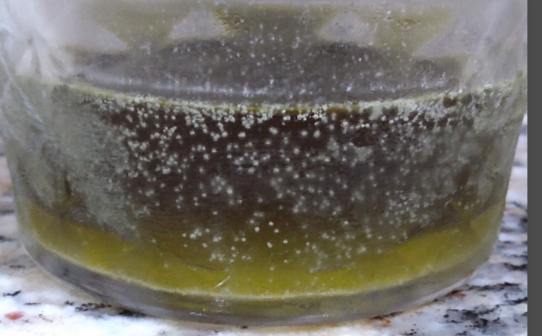Chilled Acetone with IPA and Naphtha re-X
Contents
Introduction
This TEK uses freezer chilled acetone[1] to extract salvinorin while minimizing the extraction of other plant material. The dry residue is washed with naphtha and then recrystallized from boiling 99% IPA[2] with a naphtha co-solvent addition[3].
Safety
Do not proceed unless you are familiar with handling acetone, 99% IPA, and naphtha. If you are not familiar with these chemicals, learn about their safety and make your personal adult decision on using them or not.
Salvinorin is a powerful substance. Proper dose and a sitter in a controlled environment are important (involuntary movement has been reported)[4].
Following these suggestions does not guarantee safety. Proceed at your personal adult discretion.
Steps
Step 1
Place ~100g of dry salvia leaves in a quart mason jar. Leaves do not need to be ground, but some pushing/compressing will be needed to make them fit. Cool leaves and jar in the refrigerator before the next step.
Step 2
Add about 1/3 of a quart of freezer chilled acetone and cover with an acetone resistant lid such as the type pictured below:
Shake for 60s. Uncover and use metal canning jar ring to screw on a nylon mesh (nylon is compatible with acetone, test beforehand if not sure) or coffee filter, leaving a small gap on one side (for airflow when wet). Filter acetone into new quart jar. Unscrew filter and repeat this extraction two more times to obtain about 3/4 of a quart of extract (some acetone is left behind on the leaves). Extraction should be done all at once and only take a few minutes.
Step 3
Place extract with acetone resistant lid in freezer until sediment stops forming (~overnight). Decant into shallow evaporation dish leaving solids behind.
Step 4
Evaporate acetone in a well ventilated area. It is recommended to avoid direct sunlight. Some water will be absorbed and a fan can speed evaporation, especially towards the end when mostly water remains. Scrape up green powdery residue and transfer it to a small mason jar.
Step 5
Wash powder with naphtha. Allow time to settle and ensure naphtha is clear before decanting to not lose any product. Repeat until solvent is no longer a deep green (light green is OK). Allow napthata to evaporate.
Step 6
Washed powder will still be green. Dissolve it in boiling 99% IPA leaving any insoluble matter behind. Use a hot water bath to heat up the IPA (do not have flames anywhere near solvents).
Step 7
Allow IPA too cool and add two volumes of naphtha. Place cloudy solution in freezer for several days. White xtals will grow over time, for example:
Decant green liquid, rinse with Naphtha, dry, and recover xtals. Typical yield is 0.2% to 0.3% (100g of dry leaf will give ~250mg of white powder). Optionally, dissolve product in acetone and evaporate slowly to yield larger crystals (for cosmetic purposes).
Product Information
This produces a relatively pure powder thought to have ~ 80% of active salvinorin A[5].
Dosage
One milligram is considered a large dose when vaporized, with 0.2 to 0.5mg being more common. One method of dosing is dissolving salvinorin in acetone (which saturates at about ~23mg/ml[6], equivalent to 29mg/g) and calculating the dosage per drop. A practical way to do this is to pre-weigh the acetone and salvinorin, mix, and then measure the average drop weight of 10 drops or more. For example, if 125mg of salvinorin are dissolved in 5g of acetone a single ~20mg drop will carry ~0.5mg of product. That would be many personal doses in a small ~7ml vial. However, the long term salvinorin's stability in an acetone solution over time is currently an unknown (cool dark storage could help). Verify that acetone does not evaporate while stored since that will throw off the dosage and could cause precipitation. To administer, simply add the desired dosage by counting drops to your vaporization device, allow the acetone to fully evaporate, and then vape. High vaping temperatures are not required and an e-mesh setting of 180C can be sufficient[7].

